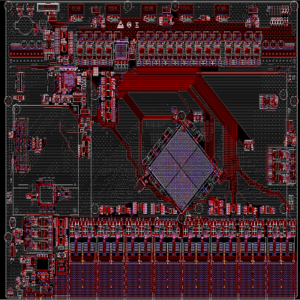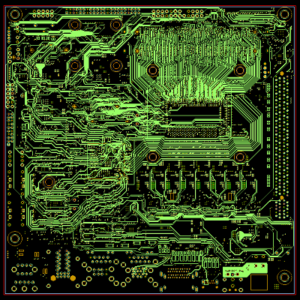Due to the growing concerns and advocacy for environmental friendliness, as well as the prohibition of harmful substances like lead (tin), an increasing number of industries are moving away from the use of HASL (Hot Air Solder Leveling) technologies for PCB (Printed Circuit Board) surface treatment. The current trend is to use other surface treatments such as OSP, gold plating, immersion tin, immersion silver, ENIG and ENEPIG. Among them, immersion silver becoming a popular choice since it has excellent performance and cost effectiveness.
What is Immersion Silver Finish?
Immersion silver finishing is an environment friendly surface treatment that coating a layer of silver (about 0.1~0.4um) on the copper surface to ensure the good solderability when assembly. When comparing its functional performance with other surface finishes like OSP and ENIG, immersion silver falls between them. It exhibits outstanding solderability and exceptional solder joint strength, surpassing OSP, which lacks a conductive barrier. However, when employed as a contact surface, immersion silver demonstrates lower strength compared to gold.
What is the Working Principle of Immersion Silver?
Immersion silver finishing uses chemical deposition to finish the whole processes. Electrochemical deposition is a method of reducing and depositing metals onto the surface of an object by controlling the current in a solution. In the immersion silver process, the pad serves as the anode (positive electrode), while silver acts as the cathode (negative electrode), with a current applied between them. This causes silver ions (Ag+) to be reduced to silver metal under the influence of the electric field, subsequently adhering to the pad surface and gradually forming a silver layer.
The displacement reaction of immersion silver is:
2Ag+ + Cu = 2Ag + Cu++
This method utilizes both electrical current and chemical reactions to deposit silver from the solution onto the surface of the PCB pad, creating a uniform and porous silver layer.
Silver Plated Analyzing: Pros vs Cons
Before selecting the immersion silver coating, we should understand its advantages and disadvantages to consider whether it is suitable for your PCB project and end-applications.
Pros of immersion silver:
- Cost-effective than immersion gold
- Good surface flatness and low contact resistance
- Corrosion resistance
- Good solderability, especially for BGA chips or smaller components
- Environment friendly
- High reliability
Cons of immersion silver:
- Difficult to handle, must wear gloves
- Special storage conditions – if the package is opened and not all PCBs need to be used, it must be resealed quickly or use them within 24h.
- Peelable masks can’t to use
Important Points You Must Know About Storage
- For storage and handling, it needs more careful than immersion tin and OSP.
- It is compliant with ROHS and safer than HASL.
- In the dry conditions, it can be stored 6-12months.
- PCB with immersion silver must be soldered within 24hours if package is unsealed.
- If the immersion silver PCB has been stored for more than 12 months, a solderability testing is must before assembling.
Immersion Silver vs ENIG
ENIG also is a common surface treatment in the PCB manufacturing, its full name is Electroless Nickel/Immersion Gold finishing. The ENIG technology is a relative expensive than immersion silver, and it suitable for more complex layout design.
ENIG plating involves safeguarding the copper pads on PCBs by first applying a layer of nickel and then overlaying the copper surface with a thin layer of gold. In essence, the procedure is akin to immersion silver, but it significantly improves PCBs by providing enhanced resistance to oxidation, superior solderability, and excellent surface planarity.
Let’s review the performance comparison between these two surface treatments:

Welcome to contact us if you have any questions about immersion silver or other surface treatment.









